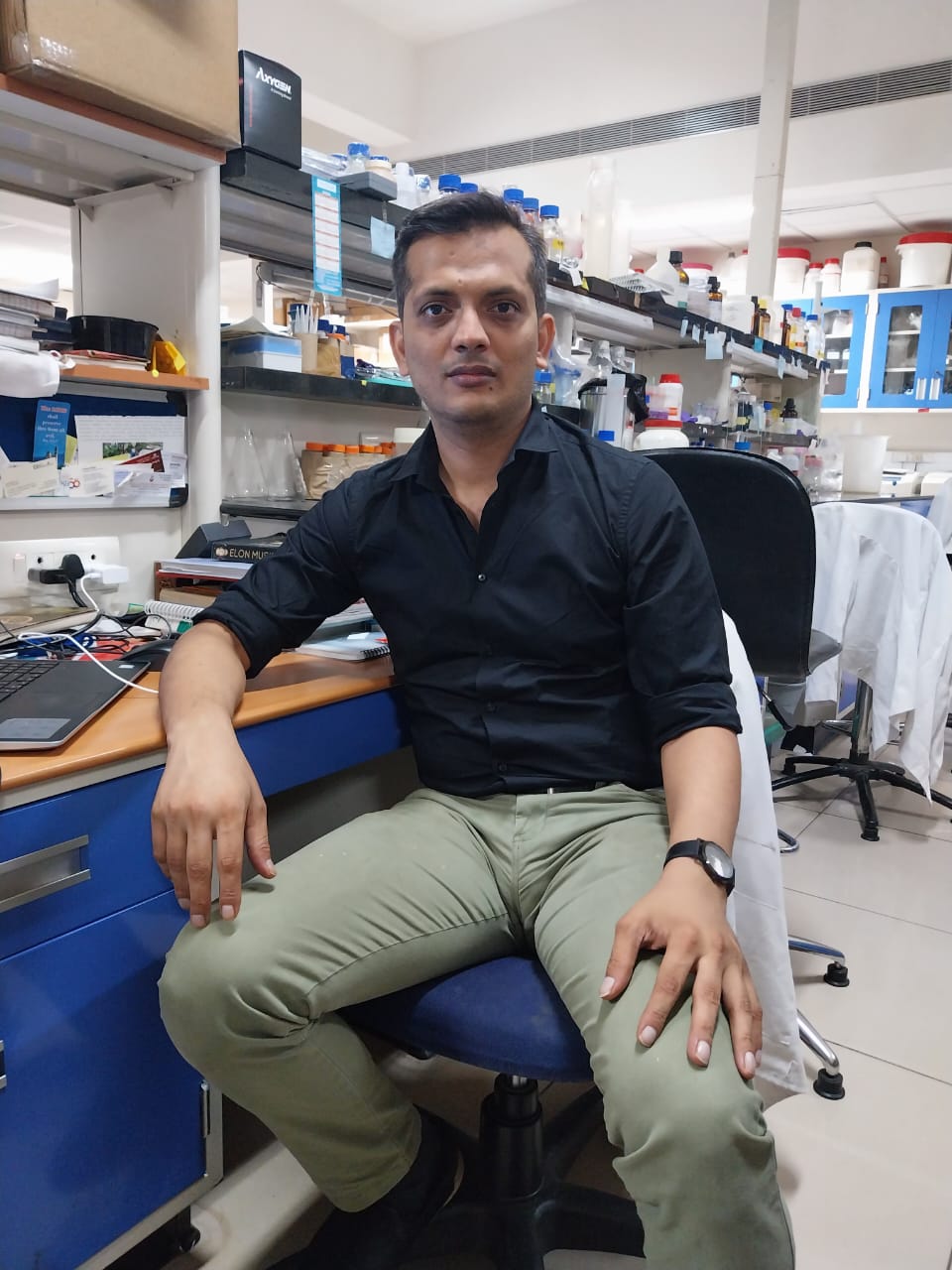Research
DNA topoisomerases and topology modulation
The bacterial genome is supercoiled, compacted and condensed into a nucleoid by the combined action of topoisomerases and nucleoid associated proteins(NAPs). In my laboratory, a combination of genetics, biochemistry, structural and cell biology approaches are employed to study the function of both topoisomerases and NAPs of M. tuberculosis. Combined action of topoisomerases and NAPs ensure bacterial chromosome compaction to regulate all major DNA transaction processes. Some of the highlights of the work in our long- term studies: development of peptide inhibitors specific to mycobacterial gyrase with a novel mechanism of action, elucidation of dual role of gyrase in supercoiling and decatenation, the molecular basis of switch from supercoiling to decatenation - binding of second DNA to GyrB subunit, demonstration of direct binding of fluoroquinolones to GyrA subunit and holoenzyme apart from the established mode of action, action of gyrase modulatory protein, YacG, in regulating the supercoiling activity by inhibiting strand passage, importance of carboxyl terminal basic residues in strand passage activity of TopoI, development of inhibitory monoclonal antibodies against TopoI and first set of small molecule inhibitors, characterization of a membrane anchored NAP (Rv3852) involved in lipid metabolism, biofilm formation, direct physical interaction between HU and TopoI to enhance DNA relaxation activity of the enzyme by stimulating the strand passage, In addition to characterizing new mycobacteria specific NAPs, we have developed small molecule inhibitors of HU by structure based design. The inhibitors bind to the DNA binding cleft to displace DNA, de-compact the nucleoid and inhibit M. tuberculosis growth. Chemical probing using these inhibitors reveal the importance of HU regulon to the organism. HU is modified extensively by post- translational modifications, that include acetylation, phosphorylation, succinylation and methylation, influencing the bacterial gene expression. Some of these epigenetic modifiers impact the host genome dynamics and intracellular survival of the pathogen. One such bacterial effector- Rv2067 methyl transferase intercepts and reprograms host epigenetics and downstream signaling by multipronged approach ensuring the survival of the pathogen in the hostile intracellular environment.
Regulation of gene expression in mycobacteria
To study transcription initiation, elongation and termination, we developed a method for purification of optimized RNAP holoenzyme (with stoichiometric SigA). Promoter: polymerase interaction studies with this enzyme revealed different rate limiting steps at various promoters. Next, we elucidated the distinct mechanism of growth phase dependent regulation of gyr and rRNA promoters of Mtb. An interaction between promoter discriminator region and sigma 1.2 dictate the initiating NTP and pppGpp mediated regulation of transcription initiation. The mechanism of autoregulation of gyrase and topoisomerase I by RST and SST and the connection between RST and reiterative transcription has been established. Both intrinsic and factor dependent transcription termination have been studied uncovering alternate paradigms and unusual characteristics. Understanding new facets of Rho function has led us to suggest it as the major regulator in the genus. Next, we have explored functional co-operation between intrinsic and Rho mediated termination. As a follow up, conditional knock down strains of key cellular players described above have been generated to investigate the topology - transcription connection in mycobacteria.
Group Member

Abodh Kumar Jha
Email : abodhjha@iisc.ac.in
Designation : phd_student
Category : Molecular and Cellular Biology

Chinmay Anand
Email : achinmay@iisc.ac.in
Designation : Postdoc
Category : Molecular and Cellular Biology
Iqball Faheem
Email : iqballmagray@iisc.ac.in
Designation : phd_student
Category : Molecular and Cellular Biology

Jayashree H V
Email : jayashree@iisc.ac.in
Designation : Support Staff
Category : Molecular and Cellular Biology

Meghna Santoshi
Email : meghnas@iisc.ac.in
Designation : phd_student
Category : Molecular and Cellular Biology

Mourifat Ahmad
Email : mirmourif@gmail.com
Designation : Research Assistant
Category : Molecular and Cellular Biology

Muzammil Hussain
Email : muzammilmscbc@gmail.com
Designation : Research Assistant
Category : Molecular and Cellular Biology
Niladri Barman
Email : niladrib@iisc.ac.in
Designation : phd_student
Category : Molecular and Cellular Biology

Prakruti Singh
Email : prakrutisingh@gmail.com
Designation : Postdoc
Category : Molecular and Cellular Biology

Priyanka Tare
Email : priyankatare@gmail.com
Designation : Postdoc
Category : Molecular and Cellular Biology

Varsha Mahapatra
Email : varsham@iisc.ac.in
Designation : phd_student
Category : Molecular and Cellular Biology
Publications
2023
Singh PR, Dadireddy V, Udupa S, Kalladi SM, Shee S, Khosla S, Rajmani RS, Singh A, Ramakumar S
The Mycobacterium tuberculosis methyltransferase Rv2067c manipulates host epigenetic programming to promote its own survival., Nat Commun., 14(1)
2020
Karambelkar S, Udupa S, Gowthami VN, Ramachandra SG, Swapna G, Nagaraja V.
Emergence of a novel immune-evasion strategy from an ancestral protein fold in bacteriophage Mu., Nucleic Acids Res, 48(10)
2017
Ahmed W, Sala C, Hegde SR, Jha RK, Cole ST, Nagaraja V.
Transcription facilitated genome-wide recruitment of topoisomerase I and DNA gyrase, PLoS Genet., 13(5)
2014
Bhowmick T, Ghosh S, Dixit K, Ganesan V, Ramagopal UA, Dey D, Sarma SP, Ramakumar S, Nagaraja V.
Targeting Mycobacterium tuberculosis nucleoid-associated protein HU with structure-based inhibitors., Nat Commun., 5(4124)
2012
Vasu K, Nagamalleswari E, Nagaraja V.
Promiscuous restriction is a cellular defense strategy that confers fitness advantage to bacteria., Proc Natl Acad Sci U S A., 109(20)
Promiscuous restriction is a cellular defense strategy that confers fitness advantage to bacteria.
Vasu K, Nagamalleswari E, Nagaraja V.Proc Natl Acad Sci U S A. 2012 May 15;109(20):E1287-93. doi: 10.1073/pnas.1119226109.